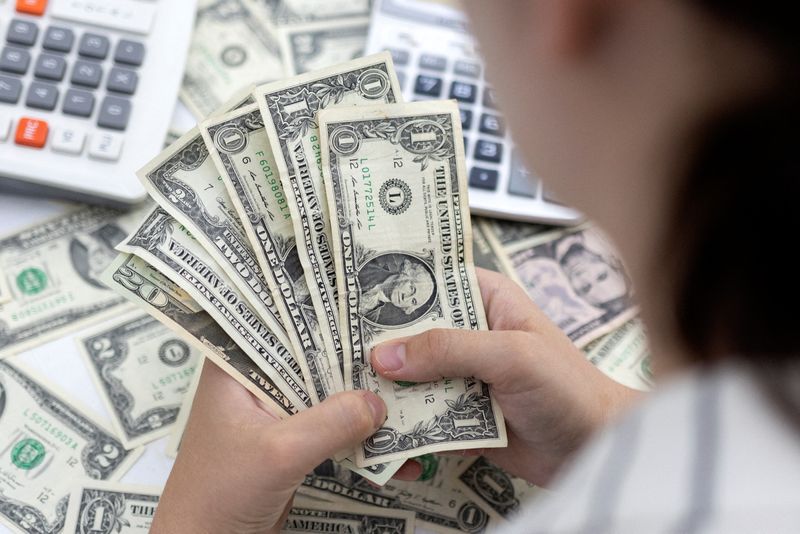By Sarupya Ganguly
BENGALURU (Reuters) – The U.S. dollar will tighten its stranglehold over global currency markets with little standing in the way of its remarkable run, and a significant number of foreign exchange forecasters polled by Reuters expect it to rise to parity with the euro in 2025.
The greenback surged over 7% against a basket of major currencies last year, falling just shy of an 8% gain in 2022 – a seven-year high – and driving the euro to the brink of dollar-parity and an over two-year low of $1.02 on Jan. 2.
While forecasters in Reuters polls — long proponents of a weaker dollar — were mostly off the mark in their median point-forecasts through last year, additional questions, particularly on risks to those estimates, captured the currency’s relentless ascent.
Much of that was due to the dollar’s near-8% rise in the final quarter of 2024, fueled by sustained, and often unexpected, U.S. economic resilience.
A signal from the U.S. Federal Reserve in December that it is in no hurry to cut interest rates further, along with inflation fears rooted in President-elect Donald Trump’s proposed tariff and tax policies, only helped to cement those gains.
“We may sound like a broken record, but our view for the next few months is for the dollar to still be quite strong. Even thinking about what potential new policies could be unveiled with the incoming administration – it should be favoring the dollar. In some ways, there’s a flavour of ‘there is no alternative,” said Paul Mackel, global head of FX at HSBC.
Interest rate futures are now fully pricing in only one more Fed rate reduction by end-2025 and wavering on the possibility of a second, compared to speculation the European Central Bank will cut rates by nearly 100 basis points by then.
That, coupled with the allure of higher longer-term U.S. Treasury yields and expectations of larger rate reductions from other major central banks, will likely limit dollar downside, said foreign exchange strategists in a Jan. 3-8 Reuters survey, showing subtle signs of a shift in stance.
The euro, currently $1.03, was seen rising a modest 1% to $1.04 over the coming three and six months and then to $1.05 by year-end, according to median views from over 70 strategists, markedly lower than expected a few months ago.
The latest positioning data from the Commodity Futures Trading Commission also showed speculators had increased their net-long dollar bets to the highest since May.
“When you look at other currencies – their fundamentals, yields and other sources of uncertainty around them – you still come back to the dollar. We may get windows where the market is happy to seek alternatives, but that proves to be temporary and this year will be another example of that,” HSBC’s Mackel said.�
Asked if the euro will reach parity against the dollar this year, a near two-thirds majority, 24 of 38 respondents to an additional question, said it would.
Of those, most said it would do so in the first half of this year.
“We maintain a target of $1 for the euro for Q2, though we recognize the risk that this target could be achieved earlier…while the dollar could end the year off its highs, we expect the theme of broad USD strength to remain in force,” noted Jane Foley, senior FX strategist at Rabobank, the most accurate forecaster for euro-dollar in Reuters polls in 2024 according to LSEG StarMine calculations.

Yet only a fraction of surveyed banks, about one-fifth, predicted the euro equalling or sliding below the dollar in the coming three-, six- or 12-month periods in their end-period point forecasts.
(For other stories from the January Reuters foreign exchange poll:)

